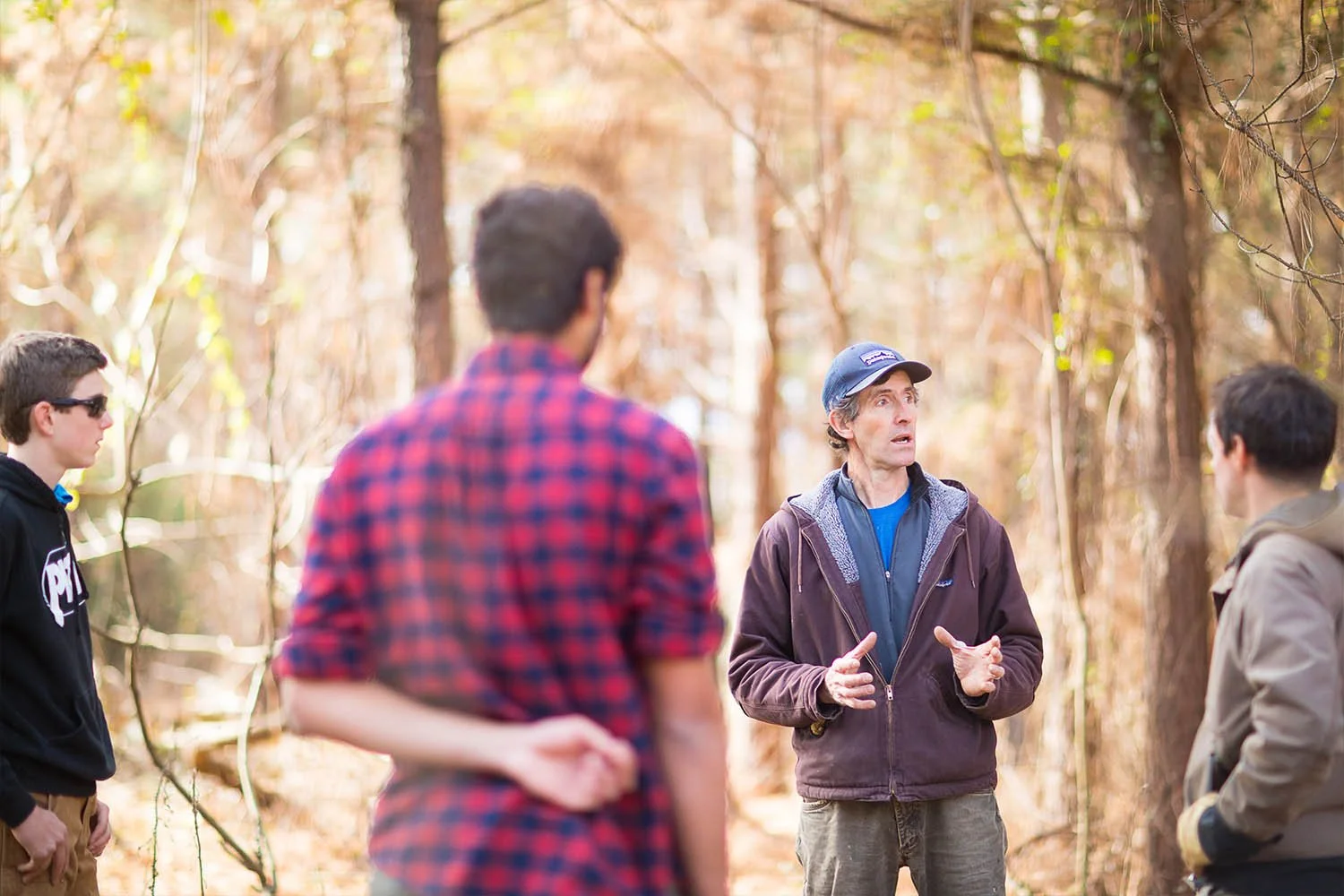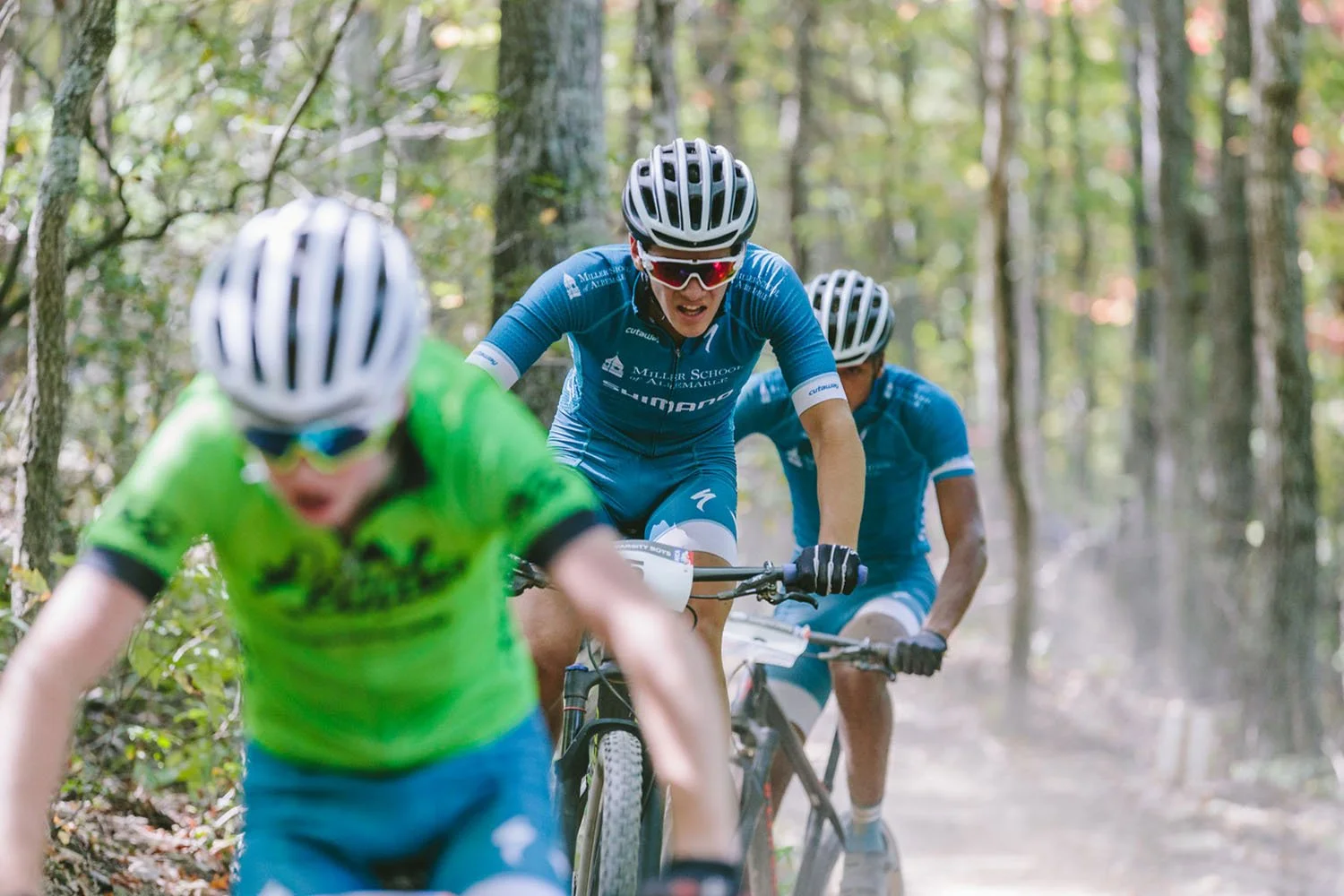A Founder's Vision: Innovative Course Gets Back to MSA's Roots
“I came among these hills; when like a roe I bounded o’er the mountains, by the side of the deep rivers, and the lonely streams,Wherever nature led: more like a man flying from something that he dreads, than one who sought the thing he loved. For nature then(The coarser pleasures of my boyish days and their glad animal movements all gone by) to me was all in all.—I cannot paint what then I was.”
In the mid-1800’s, when Samuel Miller bounded over the hills near his one-room, dirt-floor home in Batesville, Virginia, it is likely that he had an experience similar to Wordsworth’s as he describes himself on first exploring the countryside around Tintern Abbey in his youth. The founder of Miller School of Albemarle must have felt like a boy “flying” from something that he dreaded and entering a place he loved as he explored the rolling hills tucked under the Blue Ridge Mountains. It is unlikely that in his impoverished youth, Samuel dreamed that one day he would be the wealthiest man in Virginia and be able to purchase the remarkable 1,600 acres of land in Albemarle county that is today home to one of the nation’s first co-educational boarding schools. No, in his early years, Samuel likely spent his days appreciating the dense forest with an endless variety of trees, admiring the numerous streams that danced through the landscape, and dreaming of his future as he sat in the meadows, staring at Humpback Rock standing proudly on the skyline of the Blue Ridge. In this moment, there is little doubt that Samuel had a response to nature similar to Wordsworth’s in his famous poem:
“While here I stand, not only with the sense of present pleasure, but with pleasing thoughts that in this moment there is life and food for future years.”
William Wordsworth used his experience in nature to write poetry. Samuel Miller used his experience in Virginia’s landscape to develop a plan to build a boarding school. He planned a school that would rival America’s and Europe’s finest prep schools in architecture and academic programs. However, he wanted a school that also utilized nature and Virginia’s landscape to inspire and teach students as much as, if not more than, the books and teachers in the classroom. He understood that there is “life and food,” both literally and metaphorically, in nature; and he provided students one of the most impressive and varied pieces of property in Virginia to find inspiration.
“Students develop an understanding of the history of MSA and how managing the land fulfills the original visions of both our founder, Samuel Miller, and our first Head of School, Charles Vawter”
Today, Miller School of Albemarle still owns the original 1,600 acres nestled in the foothills of the Blue Ridge Mountains, and students still utilize the land in their education. In 2016, MSA launched a Land Management course taught by Andy Guptill, the director of the school’s world-renowned cycling program. The curriculum includes classroom instruction on the history of MSA. Guptill explains: “Students develop an understanding of the history of MSA and how managing the land fulfills the original visions of both our founder, Samuel Miller, and our first Head of School, Charles Vawter.” After learning the history and actually exploring all 1,600 acres of property, students begin a forestry unit, in which they assess a one-acre plot of land with dense pine trees. They then develop a plan to thin the area by removing compromised trees to promote the growth of healthy ones. “We adhere to MSA’s motto of Mind, Hands, and Heart,” comments Guptill. “Students use knowledge gained in this course as well as Environmental Science and Biology to develop a responsible forestry plan. They then get their hands dirty by actually downing and milling the trees. Finally, they utilize the lumber to build needed features on campus, ranging from benches and bridges to school signs and bike stands.”
“We adhere to MSA’s motto of Mind, Hands, and Heart.”
Students also learn cartography. Guptill has partnered with Albemarle County GIS to teach students the importance, uses, and applications of properly done cartography. After learning how to use the equipment, the class is allowed to use Albemarle County GPS devices to map campus areas and to plot specific features. Many of the features plotted are unique trees, streams, rock formations, and sections of forest that will be used in MSA’s ever-growing network of mountain bike and hiking trails. Jay Drake, a land management student, remarks: “MSA is land engaged. We recognize that Samuel Miller wanted students to spend time outside, learning by doing. This course is not only opening doors for me in terms of my career goals, it is also reopening over a thousand acres of land to students, teachers, and members of the outside community with our world-class network of trails. This may be the first time since Samuel Miller explored this land as a boy that people have had a chance to see just how beautiful MSA’s property is. We basically have National Park-quality land for a campus.”
“MSA is land engaged. We recognize that Samuel Miller wanted students to spend time outside learning by doing. This course is not only opening doors for me in terms of my career goals, it is reopening over a thousand acres of land to students, teachers, and members of the outside community with our world-class network of trails.”
Jay Drake, who has been influential and instrumental in the construction of numerous bridges on campus, commented, “I am able to draft the bridges in Design-Build and then actually construct them on campus where needed. Maybe the most exciting aspect of this is I use lumber from trees that I cut down, milled, and treated on my own. The bridges are about as home-grown as possible. When I walk or ride my bike over one, I usually think of the tree used for the lumber.”
These bridges and trails have allowed the Land Management students to orchestrate numerous events on campus as part the course’s Eco-Tourism unit. In 2016-17, MSA hosted over 1,000 visitors for events that included a National Interscholastic Cycling Association mountain bike race, an XTERRA Triathlon, an Ultra-Endurance mountain bike race, a Trail Half-Marathon, and a VAHS MTB Series race.
As Andy Guptill sums things up: “The campus trails and Land Management course provide both MSA and the surrounding community a better appreciation for the beauty of Virginia’s landscape. Furthermore, using MSA’s land in a responsible manner pays tribute to Samuel Miller’s legacy and helps ensure the preservation of the 1,600-acre campus for generations to come.” As Wordsworth would say: there is much “life and food / For future years” in the MSA landscape.





